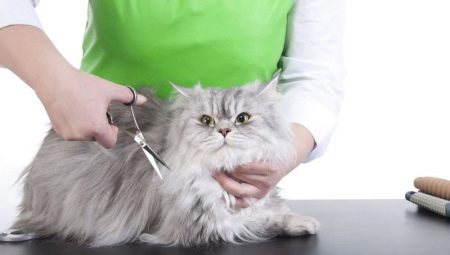Grooming cats is a very relevant topic and raises many questions from their owners. This is a very specific and serious matter, so before deciding to cut a pet, you need to familiarize yourself with the intricacies of the process and weigh the pros and cons.
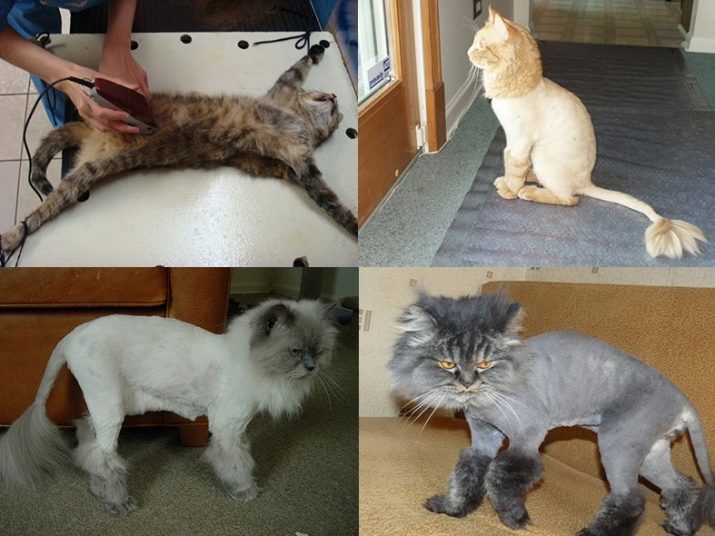
Appointment
One of the main reasons cats are sheared is stalling wool and the formation of tangles. In this regard, the main purpose of the haircut is to rid the animal of the unpleasant sensations arising from the tightening of the skin with fallen hair.
Especially often, long-haired cats suffer from this, in which these troubles happen very often. One has only to miss combing, as the animal begins to experience tangible discomfort and become very nervous. Moreover, in tightened skin, blood circulation is disturbed due to which an intolerable itching appears.
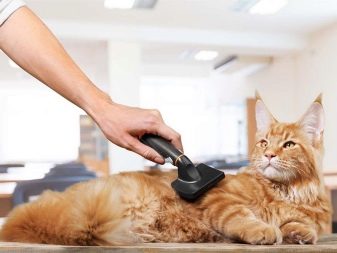
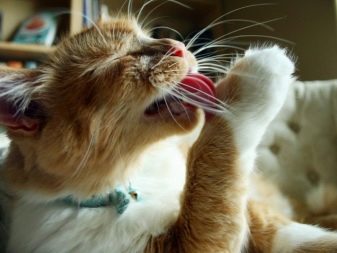
Another, no less important purpose of the haircut is the prevention of swallowing a large amount of wool during licking, which often provokes serious digestion problems of the pet.
An equally important reason for cutting off excess hair is the climate is too hot as well as an increase in room temperatures in summer and winter. It is very difficult for animals, especially long-haired animals, to tolerate air temperatures above 35 degrees, so it is simply necessary to alleviate the condition of the pet in such cases. Another common problem with wool cats is contamination of long hair with excrement during the trip to the tray.
In this case, there can be two ways out of the situation: the constant washing of the contaminated area or the cutting of hair around the anus.
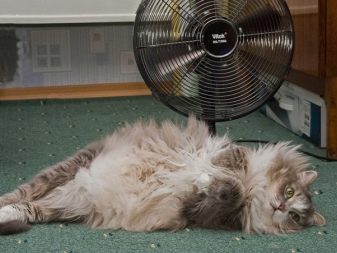
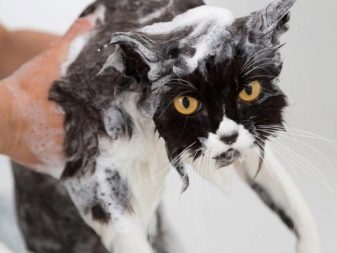
However, the latter procedure does not add to the cat's attractiveness, so it is better to cut it all than to cut individual places.
In addition to the hygienic component, there is also an aesthetic moment in the grooming of cats. A properly trimmed pet looks very beautiful and well-groomed, attracting the attention of others and pleasing the eyes of the owners. In addition, intensively shedding animals also require trimming, otherwise they literally fill up the house with their hair. But if the cat sheds too long and copiously, it should be shown to the veterinarian, as intense hair loss can be caused by a lack of vitamins or the onset of a serious illness.


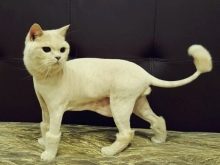
Pros and cons
As mentioned above, the benefits of cat grooming, of course, are. This is getting rid of the animal from the unpleasant sensations caused by tightening the skin with bundles of fallen hair, and alleviating the condition of the pet in the heat, and a significant reduction in the amount of hair in the house during molting of the cat. The latter is especially true for owners suffering from allergic reactions to animal hair, as well as for young children.
In addition, the haircut noticeably transforms and ennobles even the most ordinary-looking cat and makes it a beautiful and graceful animal.
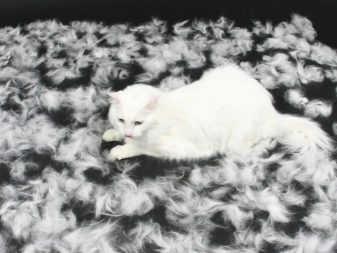
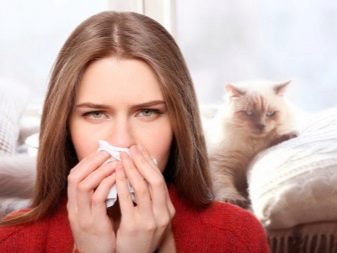
However, in addition to the obvious benefits, the haircut has its drawbacks. One of the most important negative points is the violation of the thermoregulation of the animal’s body, due to the fact that a rough intervention occurs in the mechanism of natural conditioning of the skin provided by nature. As a result, after removing part of the coat, the animal's body temperature changes, and it becomes vulnerable to drafts and direct sunlight.

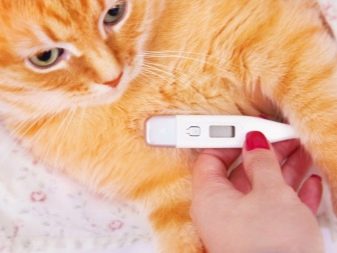
Another significant argument against the haircut is the deterioration of the condition of the hair after regrowth. There are frequent cases of marked degradation of the hair structure and color changes. But this is not the main thing, since the most dangerous consequence of grooming cats is the most powerful stress experienced by most animals, especially hair cuts for the first time. Many pets after the procedure fall into serious depression and often get sick on a nervous basis. It is also worth mentioning the known cases of animal death during cutting from cardiac arrest.
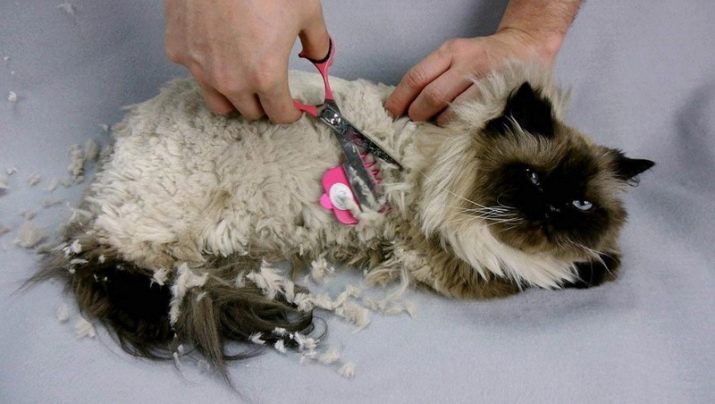
However, for the sake of fairness, it should be noted that such cases are single in nature, and most animals quickly move away from fear and live their former lives.
Considering the minuses, one can not help but mention that cats grow quite slowly, and there is no guarantee that the hair after cutting can ever reach its original length. Moreover, in the first few weeks after cutting, the hairs will remain quite scratchy and not very pleasant to the touch. With very short haircuts, performed with nozzles of 1 mm length, the risk of damage to the skin of the pet during scratching increases significantly.
Therefore, mating cats too short is very harmful and risky, in addition, most of the problems arising from the long coat of the animal can be solved by regular grooming and thorough combing.

Varieties
Cat haircuts are divided into two groups: model and hygiene. The latter pursue very specific goals and are carried out in order to protect the animal from overheating and warlocks, as well as according to veterinary indications. These include diseases of the skin and the gastrointestinal tract, increased secretory activity of the sebaceous and paraanal glands, as well as the senile age of the pet, when it is no longer able to cope with its hair on its own.
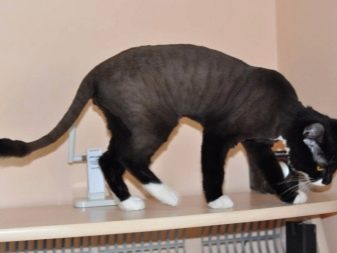

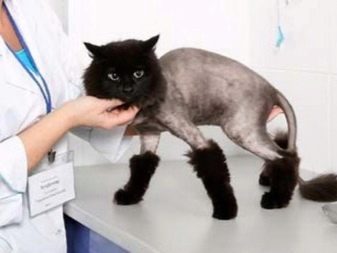
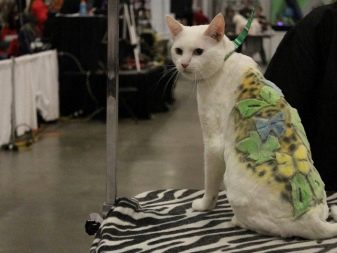
Model haircuts are performed exclusively for decorative purposes to give the animal the greatest attractiveness, as well as before cat shows.The most common of these are haircuts. under the lion, under the dragon and under the dinosaur. The “puma” hairstyle is also very popular and is a simplified version of the “lion” haircut. The difference is only the design of the tail: so, if in the “cougar” it is cut almost baldly, then in the “lions” it repeats the shape of a real lion's tail with a fluffy brush.

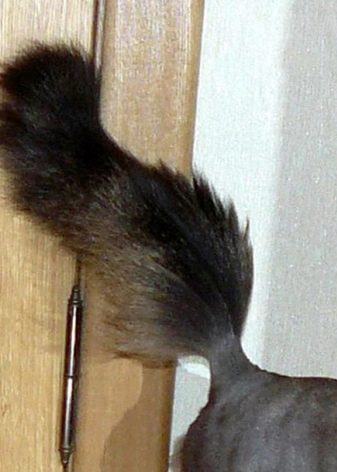
However, the most creative haircut can be called a haircut "dragon", which includes various variations of clipping symbols, letters, ornament and figures on the back of the animal. Despite the rather exotic appearance of the pet, most veterinarians caution owners from performing this haircut. This is due to the fact that after cutting the patterns, the coat on the skin of the pet becomes uneven, which greatly disrupts thermoregulation and does not allow the body to adapt to this type of heat transfer.
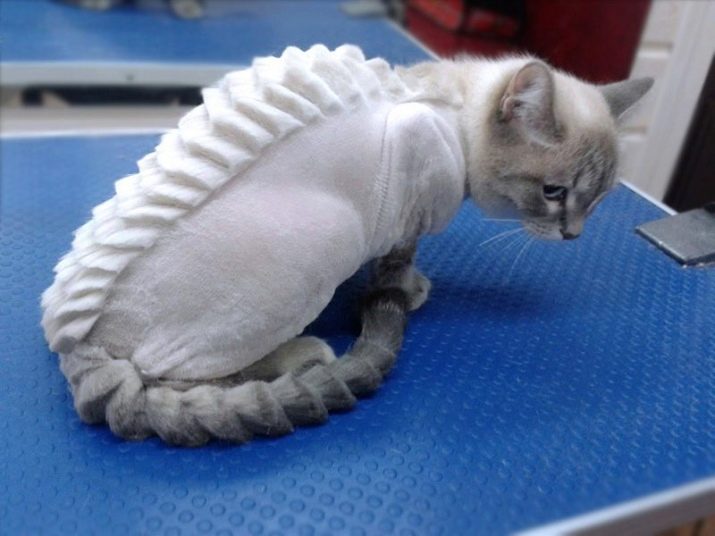
A graduated hairstyle has a much stronger negative effect on the cat's condition than uniform haircuts, to which the body adapts over time. The same thing, but to a slightly lesser extent, applies to the haircuts of the limbs “socks”, “golfs” and “puss in boots”, which are also very popular among cat owners. Among the exhibition haircuts are very popular "harlequin", "modern" and "continental chic."
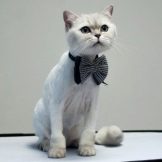
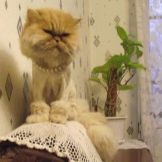
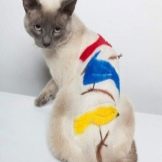
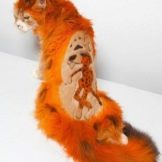
Step-by-step instruction
Before you start cutting a cat, you need to carefully prepare. To do this, you need to make sure that an assistant is present during the procedure. Then you should solve the problem with the use of sedatives, soothing the animal during shearing. However, when making a decision, it must be understood that any anesthesia negatively affects the health of cats and can only be used in exceptional cases. Next, prepare special tools and devices that will be needed in the process of cutting the animal.
- First of all, you need to decide on a place for grooming. A table or a wide ironing board is well suited for these purposes.
- To cut off tangles and large pieces of wool, medium-sized sharp scissors are required, preferably with rounded ends.
- The main tool for grooming cats is a special machine with a 3 mm nozzle. A model designed exclusively for animals should be purchased. Using a tool designed for human hair is unacceptable. When choosing a machine, you need to take into account the length and density of the pet’s hair, and if you need a device with a power from 40 to 45 W for a Persian, you can do with a relatively weak machine with a power of 20 W to cut less woolen cats.
- The type of power supply of the device should be taken into account. Network devices are more convenient in comparison with rechargeable ones: they do not require constant recharging and can work as long as you like. As for the machine’s engine, there are two options: vibration motors are rather low-power and practically do not heat up, while rotary motors have decent power, but are prone to overheating.
- For the treatment of paws, axillary hollows and the caudal region, it is better to purchase a trimmer. It is much more convenient for them to process problem areas, and it is almost impossible to injure the animal.
- You will also need a massage comb to remove excess hair and give the pet a well-groomed appearance, as well as thinning scissors that shape the paws, tail and neck of the animal.
- In case of careless handling of scissors and accidental injury of a cat, it is recommended to prepare a bottle with iodine or hydrogen peroxide.
- Wet wipes will be required to remove trimmed hair from the animal’s fur coat.
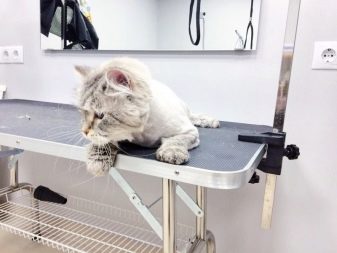
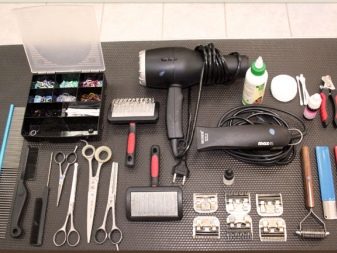
After the necessary tool has been prepared, you can proceed to the haircut procedure, which can conditionally be divided into several stages.
- Before starting to trim the pet, it is mandatory to cut the sharp tips of the claws, so that he does not scratch himself or the “hairdresser”. It is important to remember that it is possible to shorten the claws by no more than 2 mm, since the network of blood vessels goes further and its damage will provoke bleeding.
- The animal is laid on its side and paws are pressed firmly to the table. In order to fix the limbs, you will need the help of an assistant, who with one hand should hold the front paws, and the other - the hind legs.
- Next, the fur coat is checked for the presence of tangles, combing it with a massage brush “against wool”. Discovered fallen areas are carefully cut with scissors.
- Then, scissors also cut out areas near the nipples, genitals and around the anus.
- Then, at a certain distance from the animal, the machine is turned on and its reaction is observed. Most cats begin to growl and hiss, expressing their dissatisfaction in this way. Therefore, in order to avoid injuries, the assistant should press the pet to the working surface as tightly as possible.
- Starting a haircut, they first process the sides, then the back, and lastly the stomach. This sequence is due to the fact that the skin on the abdomen is very sensitive, and if you start from this area, the animal will experience extreme stress and will forever not like a haircut. Starting from the sides and the back, the groomer allows the pet to calm down a bit and understand that the procedure is actually not so scary. The main thing is not to injure the cat at this moment and not to inspire him with fear of the machine for the rest of his life.
- It is recommended to cut hair by hair growth, since this method of treatment, although quite long, but gives the pet a minimum of discomfort. Mowing against the hair allows you to cut the cat much faster and is used in relation to those animals that are not the first time to be cut and are not afraid of the machine. To shear the wool in this way, it is recommended to slightly tighten the skin in the opposite direction with respect to the movement of the knives, thus reducing unpleasant pulling sensations.
- Then, using a trimmer, shear the hair on the folds and relief areas of the animal’s body: under the armpits, around the elbow joints and under the tail.
- Then the legs and tail are sheared, forming a small brush on the last, to avoid injuring the tip.
- After the haircut of the body and limbs is completed, the cat is wrapped in a towel and the mane is treated with thinning scissors.
- At the end of the procedure, the animal is bathed, washing off excess hair with water, after which it is dried in a natural way and combed out with a massage brush.
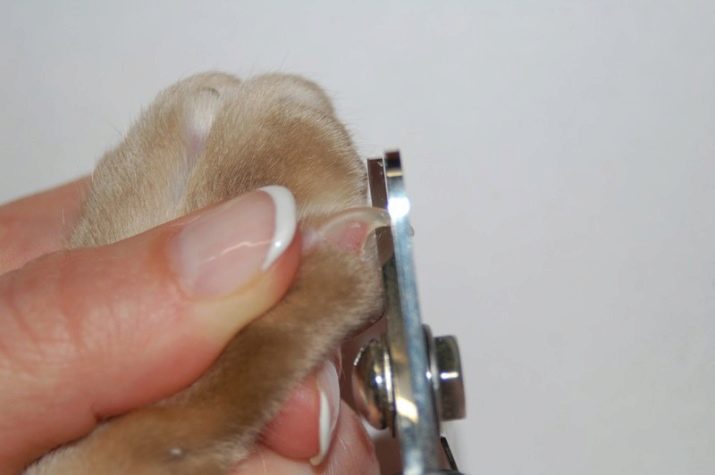
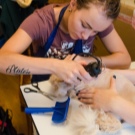
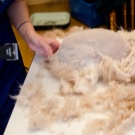
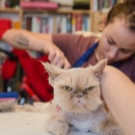


If the owner of the animal does not have experience in grooming cats and is not entirely confident in his abilities, it would be wiser to visit the salon and use the services of a professional groomer. However, in most cases, domestic cats experience great stress from visiting an unfamiliar place, so it is better to invite a specialist to your home.
How often do?
Hygienic haircuts are performed no more than twice a year. This is due to the fact that the wool will grow to its former size in about 5-6 months, in addition, the animals also molt twice a year. Shearling is usually performed by Siberian, Persian, Angora and Norwegian cats, while this procedure is not required for short-haired cats.
Show cats are trimmed 3-4 months before the eventIt is not recommended to cut the hair too short: the animal will grow over a very long time and may not have time to increase the desired length before the show.
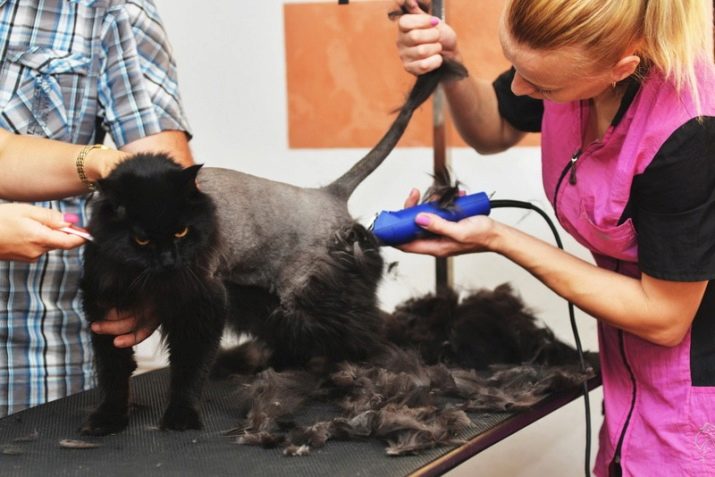
Many owners are wondering if it is possible to cut an animal in winter. Experts quite allow winter haircuts, especially if the apartment where the cat lives is very stuffy and hot.
Tips
Before deciding on a cat haircut, the recommendations of experienced professionals must be taken into account.So, professional groomers advise, if possible, not to touch the tail, which is the most vulnerable part of the animal’s body. Even minor damage to the pet causes great suffering to the pet and can negatively affect the general well-being of the cat. You should pay attention to the stomach, especially the lower, most delicate part of it.
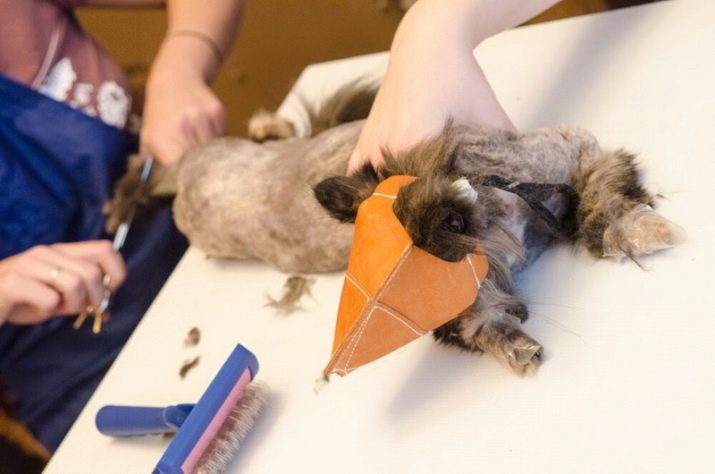
The fact is that it is in this area that a large number of skin folds are concentrated, which, with a lack of experience and the absence of a hard hand, can easily be damaged.
The next point that experts advise to pay attention to is the psychological preparation of the pet. This procedure may take some time and patience from the owner of the cat. So, long before the planned haircut, you need to start accustoming the animal to the table. This should be done very carefully and consistently.
To begin with, the cat is simply placed on the work surface, stroking her sides and back and, if possible, trying to lay the pet on its side, without stopping stroking. After the animal ceases to behave warily on the table and will gladly respond to caresses, gently begin combing out, each time increasing the procedure time.
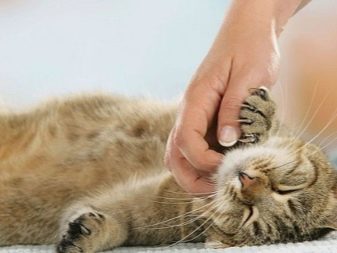
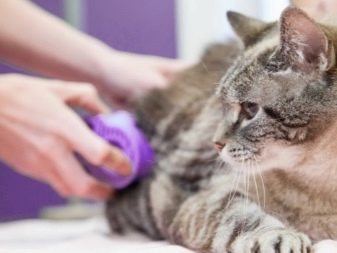
If you follow the sequence and do not forget to regularly comb the cat on the table, then over time it will get used to the procedures and will perceive the table and comb quite calmly. The next important step will be to train the pet to the sound of a working machine. Ideally, it is better to purchase a silent device, but if this is not possible, you can try to accustom the cat to the noise of a running electric motor. To do this, a few days before the haircut, you should briefly turn on the machine, while holding the pet in its arms and stroking it.
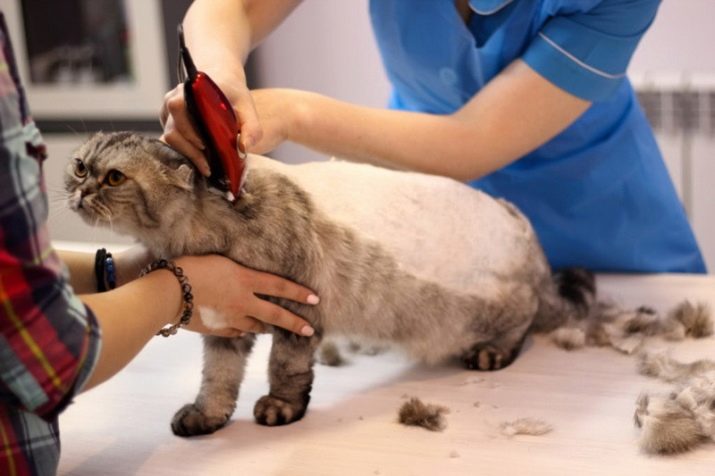
If everything is done correctly, the procedure will be successful, and the animal will not experience much stress.
In general, cat or cat haircuts should be perceived as an extremely extreme measure, when the animal’s hair is hopelessly started and combing the tangles is not possible. As for the haircut for decorative purposes, in this case it is necessary to be guided by the cat’s reaction to the procedure, while assessing the possible consequences. When performing complex exhibition hairstyles, it is recommended to give the cat a rest and trim in 2-3 stages.
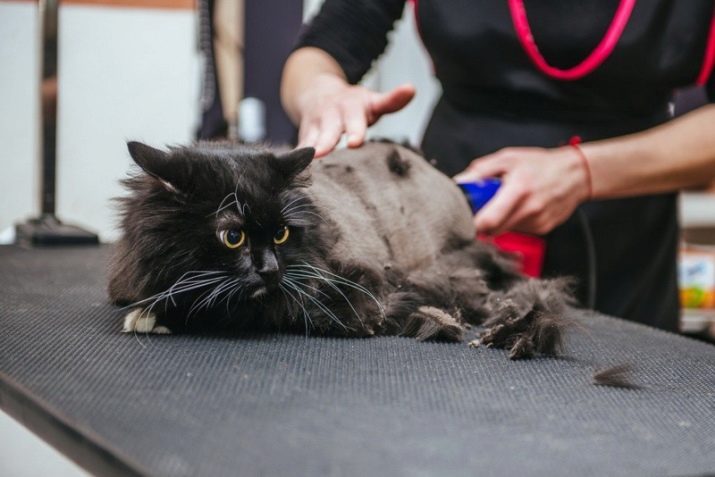
It should also be remembered that a trimmed mustache, as well as hair inside the ears and on the head, significantly reduce the sensitivity of smell receptors. You do not need to cut your own too aggressive or overly active pets. Such animals are best attributed to the salon as an experienced groomer, where you may need to use sedatives. Thus, each owner must decide for himself whether to cut or not to cut the pet. To do this, you need to soberly assess the benefit / harm ratio and focus primarily on the well-being and emotional balance of the pet.
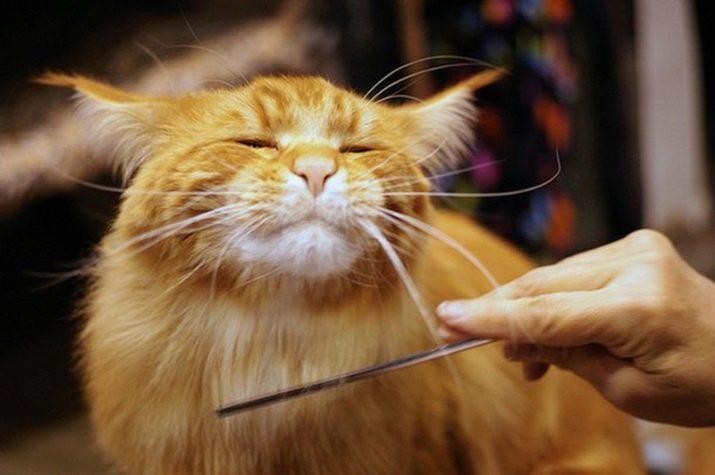
About why to cut cats, see the next video.
